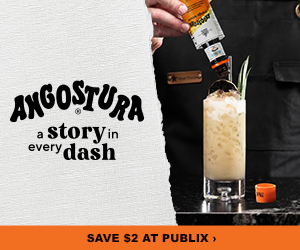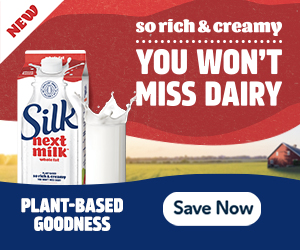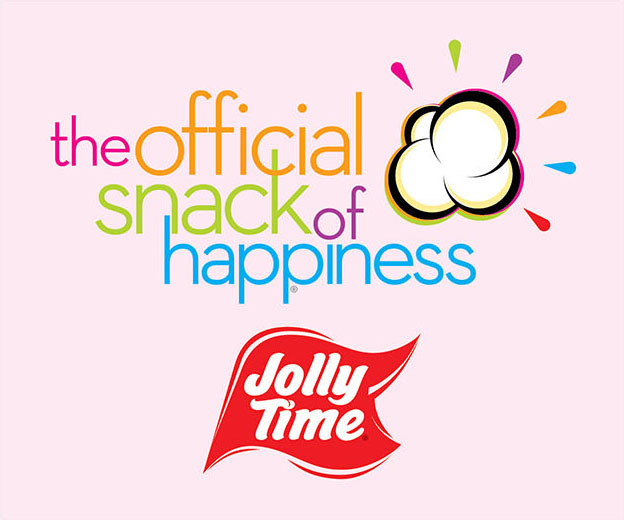This is a guest post by Brandy over at I Prefer Publix. I thought she did such a good job breaking down coupons and sales and what it means to us and the store. I also like that she does it with a sense of humor…or is it sarcasm? 🙂 I loved it and think you all will too! Be sure and visit Brandy HERE for more great deals!
One of the things that bugs me the most about being a couponer is that people (and by people I mean, cashiers, managers, other customers) think I am getting away with something, ripping off the store, cheating the system, some even say I am stealing. And it makes me furious.
This attitude comes from a lack of knowledge about how coupons work. If you’re here reading my blog, you probably know how coupons work. Here’s a quick reminder for all of us…
Manufacturer’s coupons: When the stores submit these to the clearinghouse, they are reimbursed FULL FACE VALUE plus $.08 per coupon. So the store makes MORE money by accepting your coupon than by the average shopper handing over cash/credit.
*If a coupon is difficult to read/scan at the fault of the manufacturer/design, the store can charge the manufacturer even more for the handling of these q’s.
*Most Clearinghouses are huge conveyor belts that scan coupons to tally the reimbursement value, so that cashier that agrees to “give it to you for free, shouldn’t that be enough?” by marking your $1 coupon down to $.75? Just made $.25 for the store. That huge scanner doesn’t pay a single inkling to that little $.75 the cashier wrote on your coupon.
*Stores even get reimbursed postage for the cost of shipping the coupons to the clearinghouse.
Doubling/Tripling coupons: A gimmick to get you in the door. The store eats the cost of doubles/triples. They consider it worthwhile if it causes you to shop there rather than at… Wal-Mart.
Competitor Coupons: This is truly a loss for a store. There is no reimbursement value for competitor coupons. Like doubling/tripling, accepting competitor coupons is a gimmick to get you in the doors to buy all your other items at their store rather than the competitor. Stores that accept competitor coupons are using a brilliant marketing strategy. They are counting on you wanting to buy all your items in one place, and hoping that if you have a competitor’s coupon that you can use at their store, you’ll stick around for the other things as well.
Store Coupons: Store coupons are a little tricky to define. Let’s take Publix as an example. Regular Publix shoppers will notice that those Advantage Buy Flyers have coupons and sales that rotate on a regular basis. One that appears often is the $6.2 Sundown Vitamins coupon. The CEO of Publix may be a nice guy, but he’s not browsing the local store looking for things to give away. I promise. 🙂 What happens is, some head honcho at Sundown gets together with some head honcho at Publix and they strike a deal. The value could be based on number of coupons redeemed, or number of stores that run the sale. Specifically for Publix, the most recent numbers show that Publix is getting reimbursed approximately 75-80% of the Store coupons’ face value. So don’t let anyone say to you “Publix doesn’t get reimbursed for these” “We can’t give it to you for free” “We can’t pay you to take it”. Because that shows lack of knowledge of how these q’s work.
BOGO deals (Publix): You may not be aware of this, but like the store coupons, sales like the Mega sales at Kroger and BOGO sales at Publix are also marketing ploys that are reimbursed by the manufacturer! If Publix is selling Scrubbing Bubbles BOGO at $3.99/ea, that means, you, the consumer, will pay half price for the item, or $2.00. At the end of the sale, Publix tells Johnson and Johnson, hey, we sold 100 bottles of Scrubbing Bubbles, costing us $199, now pony up. And Johnson and Johnson PAYS Publix for running the special and promoting the product. It is another form of advertising. Most recent numbers show that BOGO sales at Publix are reimbursed at approximately 70-80%.
It makes me crazy that people have this mindset that people who use coupons are abusing the system. I hate that. As long as you are an honest couponer, using legit coupons and following the store rules, then you are doing no such thing. Abuse comes from illegal photocopies, stacking two manufacturer coupons on one item, and so forth. That is true abuse of the system. Most of us? We are just honest people looking for a good deal.
And in the end? The store wins. The store wins BIG by catering to couponers. Let me show you what I mean. . .
When I shop at Publix, I use the trick of buying multiple moneymakers to build up overage to afford the items I need. This helps reduce my out of pocket expense. Do I need 10 bottles of Aleve? 8 Rolls of J&J gauze? 10 boxes of Phazyme? Not right at the moment, and I certainly wouldn’t walk into Publix and pay for all of that with cash. So Publix makes a higher profit by selling to me than the average person who runs in for a few things.
My most recent shopping trip:
For Items I use regularly that I stockpiled or needed (eggs, Morningstar, fruit, etc)
Total Cost: $125.61
Total store coupons: $5
Total Mq’s: $64.15
(Quantity of mq’s presented: 51: $4.08 handling fees)
Total doubles: $4.50
Total BOGO: $60.49
For Moneymakers:
Total cost: $108.96
Total store coupons: $103
Total Mq’s: $82
(Quantity of mq’s presented: 41: $3.28 handling fees)
For this scenario, we’ll go with an 80% return on BOGOs and store q’s.
So, for this trip, after reimbursement, the store will have received approximately $288.50, losing $38.20 in store coupons, doubles and BOGOs.
BUT If I wasn’t a couponer, and only bought the items I needed/wanted, and we’re assuming I am still stockpiling… The store would have made $120.62, losing $17.60 in store coupons, BOGOs and doubles.
When I shopped, I cost them $20.60, but I brought in an additional $167.88.
Now. Which stores was it that wanted to turn away the couponers????








This is all true but the local store sees very little of the gain made by such manufacturer relationships. These profits get retained at corporate level and are lightly and incompletely allocated to their respective stores. So yes, it benefits the company as a whole, but the local store very little. That is why the overworked, heavily-stressed management at these stores view us as an impediment to their survival. And these attitudes are passed down to many of those we interface with, the cashiers.
But we aren’t stopping, we are living and eating cheap!! Thanks so much!!
AMEN!!! Great synopsis… truly!
LOVE it! So what does that mean when our store tries to not give us overage and adjust the qs?
I love her! She is smart, funny and a great money saving chick 🙂
You are too!
Everything she wrote here is 100% true. I was a buyer for 15 years before I had kids and began my career as a stay at home mom. This is exactly the type of deals I worked out with my vendors!
This is awesome! I love it! Thanks for posting it.
LOVE IT!! Thanks for sharing this!
Great, great, great post!!!! It’s too bad stores don’t do a better job of educating employees with these facts. I get so tired of the cashiers that act like you are stealing something. I drive 30 miles so that I can shop at Publix. Mine has a pretty good coupon policy but not all of their employees or managers are willing to go by it. I have to try and plan my trip around their schedule so that I’m not there when the grouchy people are.
This post gives me a whole new level of confidence. I had a situation just the other day where the cashier and the manager would not let me stack a store coupon and a MQ because it would create an overage of $1.00. This was a Publix store that has always allowed overages. I just told them to remove the items from my ticket, but next time I’m going to have a few more tactful words with the Mr. Grouchy manager. If he can’t adhere to their own rules then I will go above him and voice my complaint.
I live in a town that doesn’t have a Publix and I know for a fact that there are literally thousands from my town that drive the 30 miles to shop at Publix. So obviously the marketing works and is serving its purpose. They need to be careful and not treat their customers bad or they stand to lose a lot of business.
What a GREAT post!!!!
This is a GREAT POST to print and bring to the stores! Publix (and all stores) should be educating their managers/cashiers on this info… I’d bet it would cause a shift in understanding/acceptance!
Anyone know a store in the northern Atlanta suburbs that will give overage without a hassle? I only use qs in the way you are supposed to but my local store has gotten downright mean about me using so many qs!
The Publix in Kennesaw at the corner of Baker and Jiles is wonderful. Very coupon friendly and they allow overage.
The Publix in New Hope on East Paulding (stack manufacturers, target and publix, and will give overage)
I wanted to point out what “SelectShoppin” said again. While “Publix” is reimbursed, we are not talking about the stores individually getting reimbursed for many of these coupons/bogo promotions. The most coupon friendly store near me has their profits down 15% even though their sales are up 5%. Yeowtch.
Please remember to limit Target, Foodlion coupons to 1 print per computer per day like they state and don’t push the rules. I find a lot of people complain when they become more strict (penny item change, reduction in stores accepting competitor coupons, etc). It is the stores right to do this if they want to and we have to appreciate and work with their policies.
All true. And they don’t teach the cashiers all this – no reason to really. Can you imagine the store having meetings and revealing their profit tactics and contracts with manufacturers to the hourly store employee? It’s not going to happen so don’t expect them to understand it all nor even the managers since that’s proprietary information belonging to the store and manufacturer.
Those cashiers who argue coupons usually do it out of their desire to “not bite the hand that feeds them” and do right by their employer – because they can’t imagine how their company could possibly make money when we are forking over so very little. So we have to also be understanding of their moral compass telling them that if it doesn’t look right and doesn’t smell right then it must not be right. We don’t want people not to use their brains, but in this case we couponers are right and their company is fine even it it seems impossible to believe. And you have to admit – it DOES seem impossible that the lady checking out and paying so little isn’t losing your company money! 🙂
So some understanding for the workers is also appropriate and the polite but firm approach is right rather than yelling at the workers which makes them hate couponers in their lines.
I love my Publix. My only problem is consistency. Sometimes a cashier will scan the coupons for full amount causing overage. The next time they will price down (write on) the coupons. I do everything by the book. I don’t argue, ask for money back, etc. I’ve had cashiers try and argue with me about overage. I tell them to get the manager, who usually sides with me making the cashier even more mad. It’s crazy. They act like I’m taking away from their paycheck.
P.S. THIS was a FANTASTIC article! Thank you. I LOVE this site more and more each week.
Very informative and insightful article. I think it would be beneficial to Publix and other retailers (especially Walmart!) to include a little couponing/sales info in their employee training. As others have commented on this site, I often tell Publix employees how to save as much as I do after they look on in amazement as my bill is tallied.
Alpha, how do you know the profit and loss of the Publix near you. I have often wondered if my wonderful Publix loses money because of their great coupon policy.
I have a good relationship with my store manager.
To All: When I wrote this post, I did some homework before-hand. My big one was talking with my store manager and the district manager and did, in fact, confirm that Publix is getting back approximately 75-85% of the face value of Store Coupons and bogos. The Store Manager indicated that the store does get back their portion. I’m not sure why the company would get he kickback, but it would not be passed down to the store it was turned in from? That would be like my store turning in their mq’s for reimbursement and the company keeping the profits and not passing it on to the store?
As far as I understand it, the store does get their percentage, but it might take a while for it to get back to them after going through all the channels.
I just think that if we, as couponers, are knowledgeable and well-informed, we can tactfully and nicely pass this information along to the stores.
As they say, knowledge is power.
And yes, always be polite and nice, even when arguing your case. 🙂
Oh, and my Store Manager has asked me if I would be interested in doing some coupon training for their cashiers, and also asked if I might be available to give a few pointers to the area managers. I hope I am able to do this because I hope I can clear up some confusion (like how to recognize a legit printable from a copied one) for them.
I called the Publix corporate office the other day and spoke to Linda (who
turned out to be some sort of manager representing the entire company). I
explained the whole “overage” question, and wanted to know what their policy
was. She specifically said,”what ever the face value of the coupon is, that is
what we take. No store should be changing the prices of any of the coupons”
(EXCEPT: competitor Q’s or ones that say “value up to ?”) She then sent and
email to the District Managers of the stores closest to me (Lake City, FL and
Gainesville, FL). I received a call from the DM of G’ville later that same day,
and he also said that no store should be changing coupon prices. In his words
“couponing has gotten to be a big thing, and I’m not about to lose customers
over a coupon.” I ended up talking to him for 36 minutes that day.
The following day, I received a call from the other DM (I also spoke to him for
30 minutes). He, too, said the same thing. Both of them said they have
repeatedly stated to their stores that they are to do overage no matter what.
(however, I’m still confused as to who is telling the cashiers otherwise b/c its
obvious that if a lot of stores are experiencing this, that SOMEONE is telling
them not to do overage.). I told him of a specific case in one of his stores
where the cashier didn’t want me to use a pub. Q and a manu Q b/c of overage,
and he said he was going to find out who it was that said that b/c they were
incorrect. According to one of them, if it’s a publix coupon you are using, and
you do get overage, then the cashier is to give you the negative balance! (I
found that part interesting).
Anyway, both DM’s seemed to agree with each other, and they both gave me their
personal email address AND phone numbers (with extensions) in case I have a
problem again. They said they want to know if something wrong is going on in
their stores.
I just didn’t know if it would help to fight in numbers. Seems like most of the
people on your site say “this publix wouldn’t take them, so I went to a “nicer”
one instead.” If they knew they could call the corporate office and talk to the
DM, then maybe they would go to the other stores and fight for their right to
use Publix’s own policy. Making a corporate call shouldn’t be a bad thing. Plus,
how good does it look to tell the cashiers/management that you spoke directly to
their DM?
Thank you. I was beginning to feel guilty for being a couponers. I’m going to print a few copies of this to carry with me in case of a hassle.
This is a great post, I linked to it in my blog. My biggest pet peeve is the stores (not my usual Publix, but some Publix stores and Target…grrrr) that reduce the coupon discount to the amount of the item. If they are getting reimbursed 100% of the coupon’s face value, then I should get to take 100% of the coupon’s value off my purchase! I don’t think that I should necessarily get cash back (I always have “extra” things to apply overage to), but I certainly don’t think it is fair for them to *make* money off me (other than the handling fee, of course).
I agree with most of what Brandy has written, and appreciate how thoughtfully it was put together. I would probably doubt Publix ‘makes’ money from processing coupons, however, as someone within their organization must be paid to sort, organize and submit all those coupons for reimbursement. I think the stores’ main issue is, as someone pointed out earlier, folks not adhering to the ‘one per customer/per day’ type competitor coupons (i.e., using 10-15 of the same Food Lion coupon in one trip) to create overage to pay for other groceries. I think that’s pretty far outside the realm of what is intended with those coupons.
Michelle, you do a great job with this site, and always seem to err on the cautious side of ethical correctness, which I really appreciate 🙂
Wendy, I should have addressed that in my original post, but what happens is this- at the end of the shift, the cashier turns in their register to the supervising manager/lead to count their drawer. The coupons are counted and matched to the drawer just as the cash is. They are then placed in bags and periodically (every week or so, depending on the store) shipped to the corporate office where they are in turn labeled by store number and shipped to the clearinghouse. The only time taken to “handle” coupons is the time it takes the shift supervisor to count them (as they are counting the cash). Beyond that, there’s very little handling done. So yes, most of the eight cents is profit to them. 🙂
I have often wondered how the stores manage processing all those coupons to be sent to the manufacturers. I wouldn’t want to do it myself if I started working at Publix. Can anyone explain that process please?
Love It!!! I have never had to a cashier lower the value of a coupon (but I am also not leaving a store w/$0 or + owed). Can’t wait till I’m that good at it!!! I have had some very mean cashiers & 1 even took a coupon & didn’t apply it 🙁 I asked Publix North Port, FL. about the MQ’s that have a store name on it like target…are they MQ’s or SQ’s. They called me back & said they are SQ’s so I can stack these w/MQ’s!!!! I did run into a problem @ Walgreen’s this past week. I went in to just get the reynolds foil for $0.89 but I had a -$1/1 MQ. They wouldn’t process the order cause it was overage & 2 coupons for 1 item. I tried to reason that their coupon was really a store sale & if the knew how the could just enter the -$1/1 coupon for -$0.89 but they wouldn’t do it. I bet though if I had gotten 2 rolls for $0.89 ($1.78) & then used only 1 -$1/1 coupon (both for $.78) they wouldn’t have caught it…but I wanted it for free 🙂 Love everyone that helps us w/all these blogs…it helps out so much!!!!!!
Oh, good to know!! Wonder if it is the same with my Publix. I have several with the Target bullseye on them but say Manufacturer’s at the top. I was wondering what to do with them. I am definately asking because that would be awesome!!
This is a great article & I absolutely loved it. I just got back from a Publix trip where a cashier tried to tell me that I couldn’t use the MQ & Publix Q for the Benevia. His exact words were, “I’ve already given you $5 off, you can’t get another $4 off the same product.” To which I cheerfully replied, “Yes I can when one’s a Manu Q and the other’s a store Q; we could always ask the manager if you’d like”. LOL. I think he was upset bc he had to apply the Publix Promise for an item that rang up incorrectly. So after all was said & done, I walked away paying $1.27 (savings $31).
awesome!
Amen Sista! Great article. They have even explained all of this quite a few times on the today show. They have had a few authors who have written books how to coupon. I think it was even on Oprah. I know it has been in all the women’s magazines. It is actually cool now to try to save money. My DH is amazed. Thank you for all you do, maybe you should write a book?? 🙂
This was a FANTASTIC article!! I shared it on my Facebook page!! It was well written and thorough. Does this explain why some stores don’t want to take another stores manufacturer coupons? Because of any deal this between that store and that provider???
This is so well written, I intend to print it out and take it with me to Publix from now on. They refused our Knox coupons a few days ago, and we had enough other groceries to absorb the overage too.
OMG, I love this post, thank you for sharing! I think I may print this and pass it along when I get an “uneducated” cashier / patron! I have become an Extreme couponer (in a mild way) with-in the past 3 months, I am ashamed to admit this but, when I married my DH he was the “Couponer”… not me, but he was the type that would abuse the system (to embarressing so I won’t go into details.) But now that I have learned the “Proper” way to do them, even he admits he “Tips his hat to me” and bows to the savings! Even he has learned from is wrongful past and has handed over the couponing reigns (sp?) to me! Thanks again for sharing this! Even though I didn’t feel bad about couponing, I still hated to see others reactions that frowned upon it. I now have amuniton when I run in to them again!
I can honestly say that the 2 Publix’s that I frequent recognize me now as the coupon lady and they actually come up to me to see my receipt to see how much money I saved and they all go WOW-you are so smart and I just tell them they could do it to. When a young bag-boy tells me now that is the way to shop (total oop $8.00 and saved $86.00) I know I am impressive and I know what I am doing. I will never, never pay full price for groceries like I used to. I try to share any information that I have with anyone that wants to learn-cashier, bagger and yes even manager’s. They know I am legit and not a con! Yeah for my Publix’s, they are the best.
I apologize for my ignorance-this was a very informative and interesting article. It has answered a lot of questions that I had about coupons, but did not know who to ask.
At some point I read some blog or article and they said that it cost the store about 2 cents per coupon for the clerical time/cost involved and the other 6 cents was pure profit. Multiply that by the thousands and thousands that they take in daily and weekly….
I love what Brandy put together; and how thoughtful she is in sharing her coupon knowledge. Ignorance is not bliss in the world of couponing. I drive out of my way to shop at “my Publix” because they appreciate couponers. Plus the staff there is super nice. They have had a few changes over the last couple of weeks due to corporate “suggested guidelines”, which is difficult when you’ve shopped for a hour and are told at checkout your coupons are accepted. I just regroup and move on, but I can’t be angry with the staff because I know they are TOPS!!! They are too amazing and I feel very safe with my children there because most staff know them and look out for us. Good customer service is key and staff who know what they are doing leads to good customer service. Brandy, MF Publix, iheartpublix and southernsavers are really helping my family by educating me on couponing and helping us to survive during these tough times.
next time i run into ‘kay’ and ‘don’t-remember-her-name-manager’ at my publix, i’ll be sure to tell them i spoke with linda at the corporate office and that under no circumstance should the face-value of any coupon (other than competitor) be adjusted. And i’ll be sure to mention that i’d happily pass along their names to linda. can’t wait to see how fast they change their minds about not letting me get overage, lol!
Thank you for all of the information. This is very informative and useful. What about expired coupons? My Publix used to take expired MQ’s up to 30 days expired (which I was told by the store manager) and then one day he said they will no longer accept expired coupons unless it’s maybe one day expired. Does the store still get paid for expired coupons, especially 30 days past date?
AWESOME article! I printed it, along with all the insightful comments! I have one question that I have yet seen answered definitively– re: using Walgreens Register Rewards at Publix. I know some cashiers enter them as competitor q’s and others scan them (since they are technically mfr q’s). Anyone know whether or not Publix gets reimbursed for these? Even if the cashier scans them as a mfr q, I only give one / transaction, just in case they do not get reimbursed. I’ve heard that they should have no problems getting reimbursed and I’ve also heard that they do NOT get reimbursed. Very confused– I sure would feel better to know that they DO get reimbursed! 🙂
Everything I know about RR’s is that they do get reimbursed. I am going to ask my SM the next time I go in if I use one, if they will follow it and let me know on their report when they turn it in if it is not reimbursed. (I think they can do that, but there are SO MANY q’s that it’s hard to know for sure)
Re: expired q’s: Yes. Stores will get reimbursed for expired q’s. Think of it this way, if you use a q expiring 1/31 ON 1/31 and the store submits it the following week, it’s already a week past expiration, then it sits at corporate before it is submitted to the clearinghouse, then it has to be processed there. By the time the clearinghouse processes your q’s, 90% of them are already expired anyway. The last number I heard was that the stores are reimbursed up to 6 months past expiration by the clearinghouse.
you have to use the correct product for publix to get the money back. they do scans at publix if the product doesnt match the required amont publix doesnt get the money back so quit cutting the pictures of the product off the coupon.knox… not the same company. we just caught on
While we are taking on the topic of Coupons–We All Win : I Heart Publix, Use coupons as substantially as attainable. Be patient in cutting them out and going through them before generating any buy. Pack them together along with your grocery bag or in the car so you can actually use the discount voucher at every single chance.